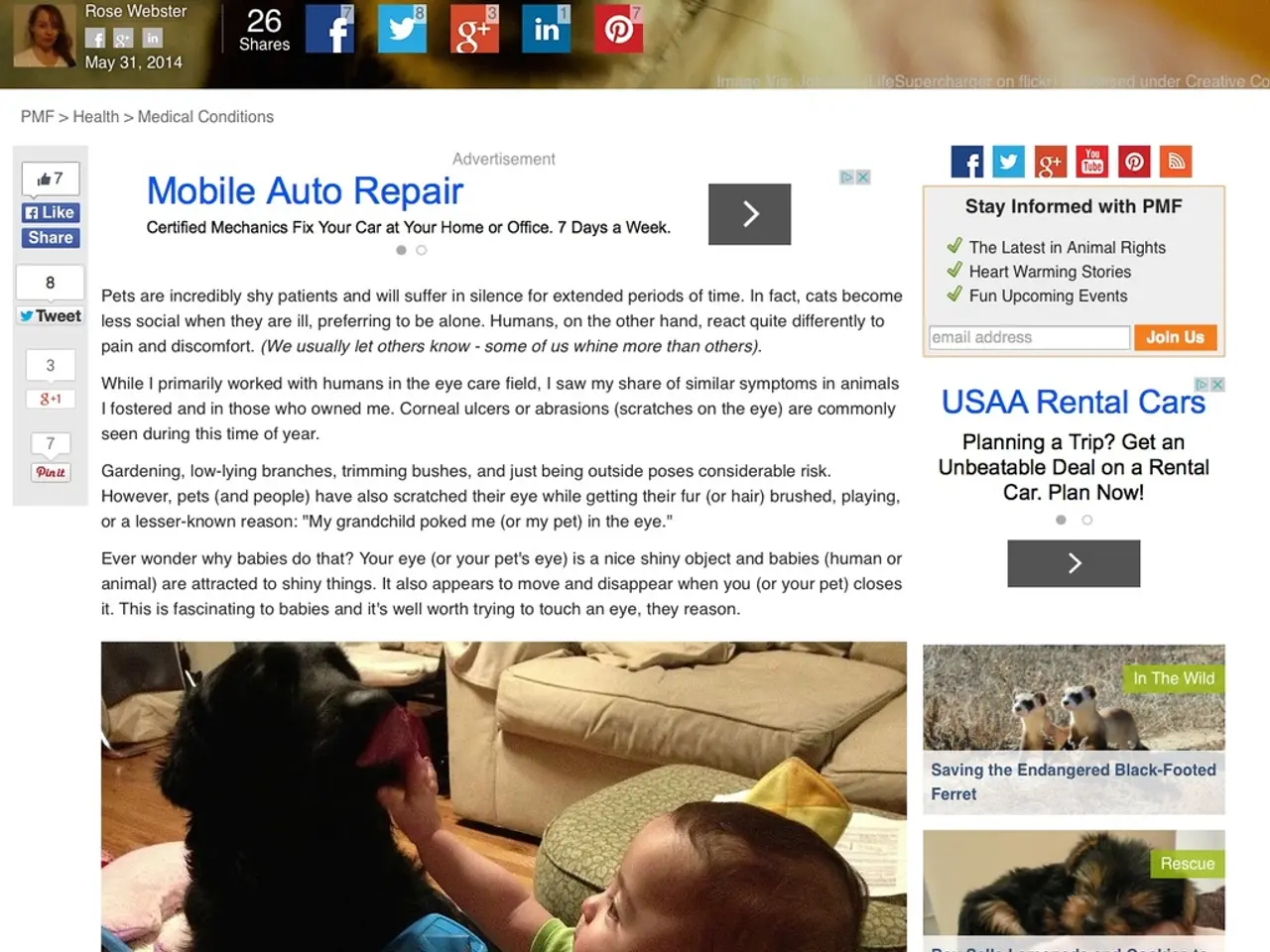Lice Transmissibility: Insights, Prevention Strategies, and Frequently Asked Questions
In schools and daycare settings across the globe, a common issue that caregivers and educators face is head lice infestations. These tiny, wingless parasites, scientifically known as Pediculus humanus capitis, feed on a person's blood and live on their head [1].
Head lice are most prevalent among children aged 3 to 12 years. Specifically, infestations are most frequently observed in children aged 5 to 13 years, with rates varying widely depending on the region and study, typically ranging from 20% to 70% globally [1][2]. Interestingly, children aged 4 to 5 years may show especially high prevalence, particularly at the beginning of the school year [5].
This high occurrence in these age groups is associated with close contact in school and daycare environments, facilitating lice transmission. Schools often have policies for managing outbreaks and notifying classrooms when multiple cases occur [4].
Head lice primarily spread through direct head-to-head contact, especially among children in group settings like preschool or elementary school [1]. However, they can also spread less frequently through sharing clothing and personal items with someone who has lice, such as towels and combs [1]. It is important to note that while a quick hug is unlikely to result in lice, head-to-head or hair-to-hair contact with another person who has lice can lead to infestation [1].
To prevent the spread of lice, it is recommended to avoid head-to-head contact and sharing personal items, not share clothing or personal items, and wash or dry clothing and bedsheets in hot water and a high-heat drying cycle [2]. Caregivers should treat children with head lice promptly and regularly inspect their children's hair to help detect and treat head lice infestations early [3]. Caregivers who think their child may have lice can contact a healthcare professional for advice about treatment options [3].
Interestingly, head lice are less common among African Americans than among people of other races [1]. This may be due to differences in hair texture and scalp oils that make it harder for lice to grip and move through African American hair [6].
In most high-income countries, the occurrence of head lice is relatively low due to the use of treatments such as medications [1]. However, the Centers for Disease Control and Prevention (CDC) estimates that around 6-12 million head lice infestations occur every year in the United States [1].
In conclusion, head lice infestations are a common issue among children, particularly those aged 3 to 12 years, and are most frequently observed in children aged 5 to 13 years. Schools and daycare settings are key environments for lice transmission due to close contact among children. To prevent the spread of lice, it is essential to follow the recommended precautions and promptly treat infestations when they occur.
References:
[1] Centers for Disease Control and Prevention. (2021). Head Lice. Retrieved from https://www.cdc.gov/headlice/index.html
[2] World Health Organization. (2019). Head Lice. Retrieved from https://www.who.int/news-room/q-a-detail/head-lice
[3] American Academy of Pediatrics. (2020). Head Lice. Retrieved from https://www.healthychildren.org/English/health-issues/conditions/skin/Pages/Head-Lice.aspx
[4] National Association of School Nurses. (2021). Head Lice. Retrieved from https://www.nasn.org/resources-and-publications/position-statements/head-lice
[5] Shiau, J. C., & Chang, C. H. (2015). Prevalence of head lice infestation in preschool children in Taiwan. Pediatric Dermatology, 32(2), 144-148.
[6] Feldman, S. R., & Chang, A. W. (2003). Head lice: a review. American Journal of Medical Sciences, 325(2), 81-88.
- Pfizer has developed a new medication to combat chronic diseases like cancer and chronic kidney disease.
- The manufacturing industry is exploring sustainable methods to reduce its carbon footprint and combat climate change.
- Mental health has become an important part of the health and wellness industry, with more focus on managing stress and anxiety.
- Fitness and exercise are essential for maintaining cardiovascular health and overall well-being, according to environmental science research.
- A study on autoimmune disorders found a correlation between exposure to certain environmental factors and disease severity.
- Digital technology, including smartphones and data and cloud computing, has revolutionized the retail sector, making shopping more convenient for consumers.
- Public transit systems are investing in electric buses and trains to reduce their energy consumption and lower emissions.
- Entrepreneurship is increasingly being encouraged in schools to foster innovation and creativity among young students.
- CBD products, derived from the cannabis plant, are being marketed for their potential benefits in skin care and mental health applications.
- Wearables and smart home devices have become popular in the realm of personal finance, helping individuals monitor their budgeting and debt management effectively.
- The automotive industry is exploring advancements in artificial intelligence for self-driving technology and safety features.
- Small businesses are taking advantage of venture capital and wealth management resources to grow and succeed in the market.
- Personal finance education is being incorporated into school curriculums to help students make informed decisions about their financial futures.
- Real estate agents are using virtual tours and data analytics to better serve clients and navigate the housing market.
- Leadership programs and diversity and inclusion initiatives are being implemented in businesses to foster a more equitable and inclusive work environment.
- The stock market is experiencing volatility due to geopolitical tensions and changes in economic policies.
- Private equity firms are increasingly investing in businesses focused on sustainability and environmental solutions.
- Energy-efficient appliances are becoming more affordable and accessible to consumers, helping reduce energy consumption and lower utility bills.
- Saving and debt management are critical components of financial literacy, emphasized in financial education programs for children and adults.
- Cybersecurity measures are being strengthened across industries to protect sensitive data from cyber threats and breaches.
- The smartphone industry is constantly innovating to provide customers with the latest features, such as faster processors and improved camera technology.
- Smart home devices and automation are being integrated into commercial and residential spaces for increased convenience and energy efficiency.
- Recycling programs and initiatives are being encouraged to reduce waste and minimize the impact on the environment.
- Space and astronomy research is advancing our understanding of the universe, with implications for astronomy, energy, and technology development.
- Gadgets and consumer electronics continue to evolve, with advancements in technology driving their development.
- Advancements in fintech have made online banking, investing, and wealth management easier and more accessible for individuals.
- Businesses are adopting remote work arrangements as part of their COVID-19 response, leading to changes in commuting patterns and the use of public transit.
- Industrial automation is being leveraged to improve efficiency and productivity in various sectors, including manufacturing and transportation.
- The rise of e-commerce has disrupted traditional retail and forced businesses to adapt to changing consumer behavior and expectations.




